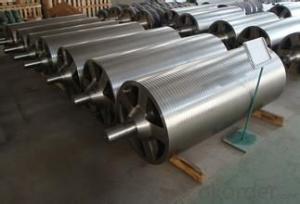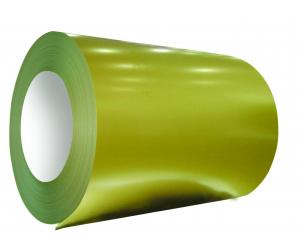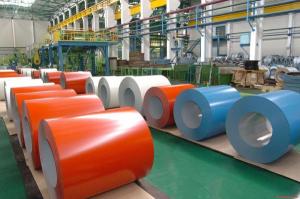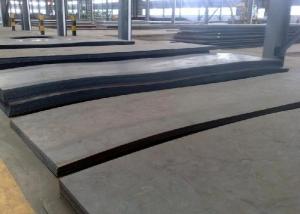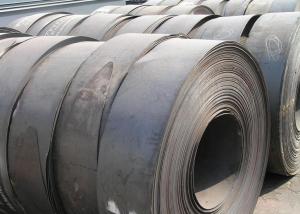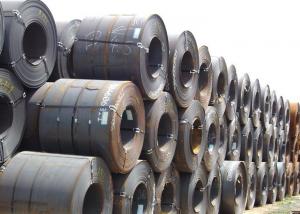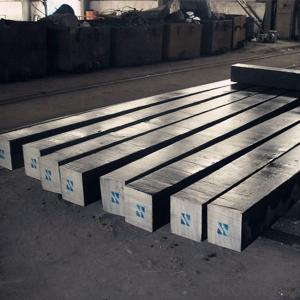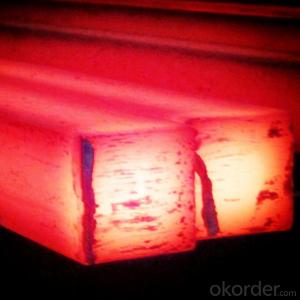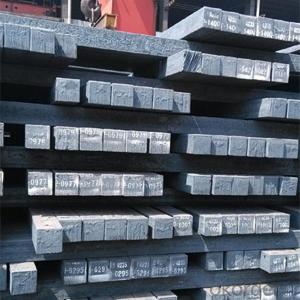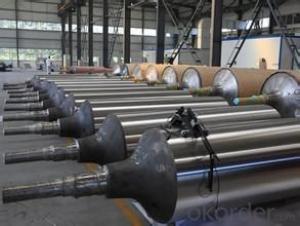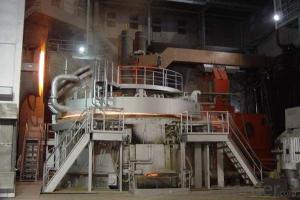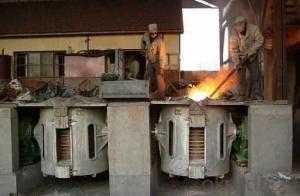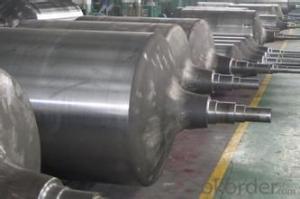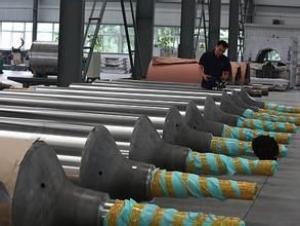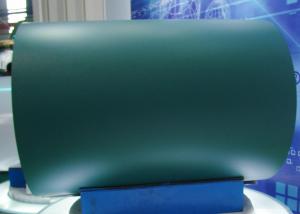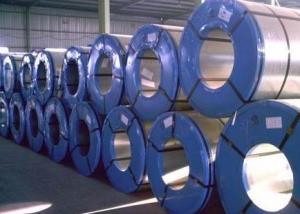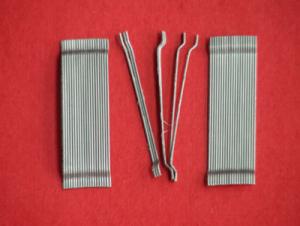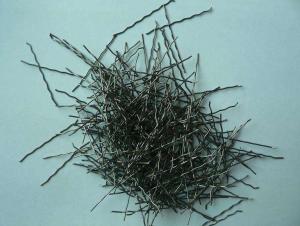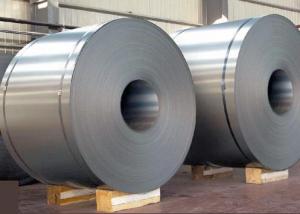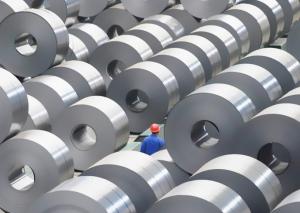Furnace equipment for steel billet and rolling mill production line
- Loading Port:
- Tianjin
- Payment Terms:
- TT OR LC
- Min Order Qty:
- 1000 PCS
- Supply Capability:
- 10000 PCS/month
OKorder Service Pledge
OKorder Financial Service
You Might Also Like
Quick Details
| Condition: | New | Type: | Arc Furnace | Usage: | Melting Furnace |
| Place of Origin: | Brand Name: | Model Number: | XABDS | ||
| Voltage: | 10-35kv | Power(W): | According to furnace design | Dimension(L*W*H): | According to the furnace capacity |
| Weight: | According to the furnace capacity | Certification: | ISO90001:2008 | Warranty: | 1 year |
| After-sales Service Provided: | Engineers available to service machinery overseas | Electrode Diameter: | 300-550mm | Shell Inner Diameter: | 3200-6400mm |
| Max. Capacity: | 10-120tons | Rated capacity: | 5-100tons |
Packaging & Delivery
| Packaging Detail: | Export standard packing |
| Delivery Detail: | 90-120 DAYS |
Hot sale smelting furnace(steel,Iron,DRI)
Electric arc furnace uses electricity as fuel source and utilizes the arc high temperature produced by electrode and furnace charge to heat and melt the furnace charge. It is widely using in production of normal steel, high quality carbon steel, various alloy steel, stainless, various ferroalloys. It is the key equipment in steel making factories, foundry factories, ferrous alloys making factories and etc.
Adoption of new technology:
1.Optimization design
2.Tubular water cooled furnace wall and furnace lid
Eccentric bottom tapping (EBT)
Copper-steel combined electrode arm
3.Cluster type large sectional area water cooled cables
Optimize large current system structure (energy-saving type)
Proportional valves hydraulic system
Basic level (PLC) + procedure level ( Industrial control computer) Control system
Frequency control technique
Network technique
Characteristic:
1. Smelting temperature is flexible to be controlled, meet different steel grade production needs.
2.High heat efficiency, atmosphere inside furnace can be controlled.
3.Can remove the phosphorus, sulfur, oxygen and other impurities and improve steel quality.
4. Easy to control the chemical composition of steel, stable and high recovery rate of alloys.
5.Equipment is simple and shorter technological process.
Main Technical Specifications:
| Rated capacity | Max capacity | Furnace Shell inner diameter ( MM) | Electrode diameter (MM) | Transformer capacity(KVA) |
EAF-5T | 5 | 10 | 3200 | 300 | 2500-4300 |
EAF-10T | 10 | 18 | 3600 | 350 | 5500-8000 |
EAF-15T | 15 | 24 | 3800 | 350 | 8000-12500 |
EAF-20T | 20 | 30 | 4000 | 400 | 9000-12500 |
EAF-25T | 25 | 35 | 4200 | 400 | 12500 |
EAF-30T | 30 | 45 | 4400 | 400 | 12500-25000 |
EAF-40T | 40 | 55 | 4600 | 450 | 16000-30000 |
EAF-45T | 45 | 65 | 4800 | 450 | 16000-40000 |
EAF-60T | 60 | 85 | 5400 | 500 | 25000-60000 |
EAF-80T | 80 | 100 | 6100 | 500 | 30000-80000 |
EAF-100 | 100 | 120 | 6400 | 550 | 40000-80000 |
- Q: What are the different types of steel storage racks?
- There are several different types of steel storage racks, including pallet racks, cantilever racks, push back racks, and drive-in racks. Pallet racks are designed to store palletized goods and are available in different configurations such as selective, double deep, and narrow aisle. Cantilever racks are used for long and bulky items like pipes and lumber. Push back racks are designed for high-density storage and allow for multiple pallets to be stored one behind the other. Drive-in racks are used for storing large quantities of the same product and allow forklifts to drive directly into the racks to retrieve items.
- Q: How is steel forgings machined for precision components?
- Steel forgings are machined for precision components using various techniques such as milling, turning, drilling, and grinding. These processes involve carefully removing excess material to achieve the desired shape and dimensions with high accuracy and surface finish. The machinists utilize advanced tools, computer-controlled machines, and precise measurements to ensure that the steel forgings meet the required specifications for the precision components.
- Q: What are the different types of steel products used in the manufacturing of outdoor furniture?
- The different types of steel products commonly used in the manufacturing of outdoor furniture include steel tubes, steel rods, steel sheets, and steel wire. These steel products are used to create the structural components of the furniture, such as frames, legs, and support structures. They provide durability, strength, and resistance to outdoor elements, making them ideal for outdoor furniture applications.
- Q: What are the different types of steel sections?
- There are several different types of steel sections, including I-beams, H-beams, U-channels, angles, and T-sections. Each type of section has its own unique shape and structural properties, making them suitable for various applications in construction and engineering.
- Q: How is steel used in the construction of parking structures and garages?
- Steel is commonly used in the construction of parking structures and garages due to its strength, durability, and ability to support heavy loads. It is used for the framework, columns, beams, and decking, providing a sturdy and robust structure that can withstand the weight of vehicles and ensure the safety of the parking facility. Additionally, steel can be easily fabricated and erected, making it a popular choice in the construction industry for parking structures.
- Q: What are the common types of steel products used in the pet food and supplies industry?
- Some common types of steel products used in the pet food and supplies industry include stainless steel bowls, crates and cages made of galvanized steel, steel shelving units, steel storage containers, and steel wire mesh for fencing.
- Q: What are the different types of steel forgings and their applications in the construction of power transmission lines?
- There are several different types of steel forgings commonly used in the construction of power transmission lines. These include: 1. Anchor shackles: These forgings are used to secure the guy wires, which provide stability to the transmission towers. 2. Clevises: Clevis forgings are used in the construction of suspension insulator assemblies, which connect the transmission wires to the towers. 3. Eye bolts: Eye bolts are used to attach various hardware components to the transmission towers, such as grounding equipment or insulator strings. 4. Yoke plates: Yoke plates are used in the construction of tension insulator assemblies, which help distribute the weight and tension of the transmission wires. 5. Pole line hardware: This category includes various steel forgings such as pole bands, brackets, and clamps, which are used to secure the transmission towers to the poles. Overall, steel forgings play a crucial role in the construction of power transmission lines by providing strength, durability, and reliable connections between various components.
- Q: How is steel sheet metal coated for corrosion protection?
- Steel sheet metal is commonly coated for corrosion protection using various methods such as galvanizing, painting, or applying a protective film. Galvanizing involves immersing the metal in a bath of molten zinc, creating a zinc-iron alloy coating that acts as a barrier against corrosion. Painting involves applying a layer of paint or primer on the metal surface, which provides a protective barrier. Another method is applying a protective film, typically through a process called electroplating, where a thin layer of another metal such as chromium or nickel is deposited on the steel surface to prevent corrosion.
- Q: What are the different grades and specifications of steel products?
- There are various grades and specifications of steel products available in the market. Some common grades include carbon steel, alloy steel, stainless steel, and tool steel. These grades have different compositions and properties to suit specific applications. Additionally, steel products come in different specifications such as size, shape, surface finish, and tolerance levels, which are determined by industry standards or customer requirements.
- Q: How are steel profiles used in the construction of underground tunnels?
- Steel profiles are commonly used in the construction of underground tunnels as they provide structural support and reinforcement. These profiles are used to create the tunnel lining, which helps to prevent the collapse of the surrounding soil or rock. Additionally, steel profiles can also be used as tunnel ribs or arches, distributing the load and ensuring stability. Overall, steel profiles play a crucial role in enhancing the strength and longevity of underground tunnels.
Send your message to us
Furnace equipment for steel billet and rolling mill production line
- Loading Port:
- Tianjin
- Payment Terms:
- TT OR LC
- Min Order Qty:
- 1000 PCS
- Supply Capability:
- 10000 PCS/month
OKorder Service Pledge
OKorder Financial Service
Similar products
Hot products
Hot Searches
Related keywords
